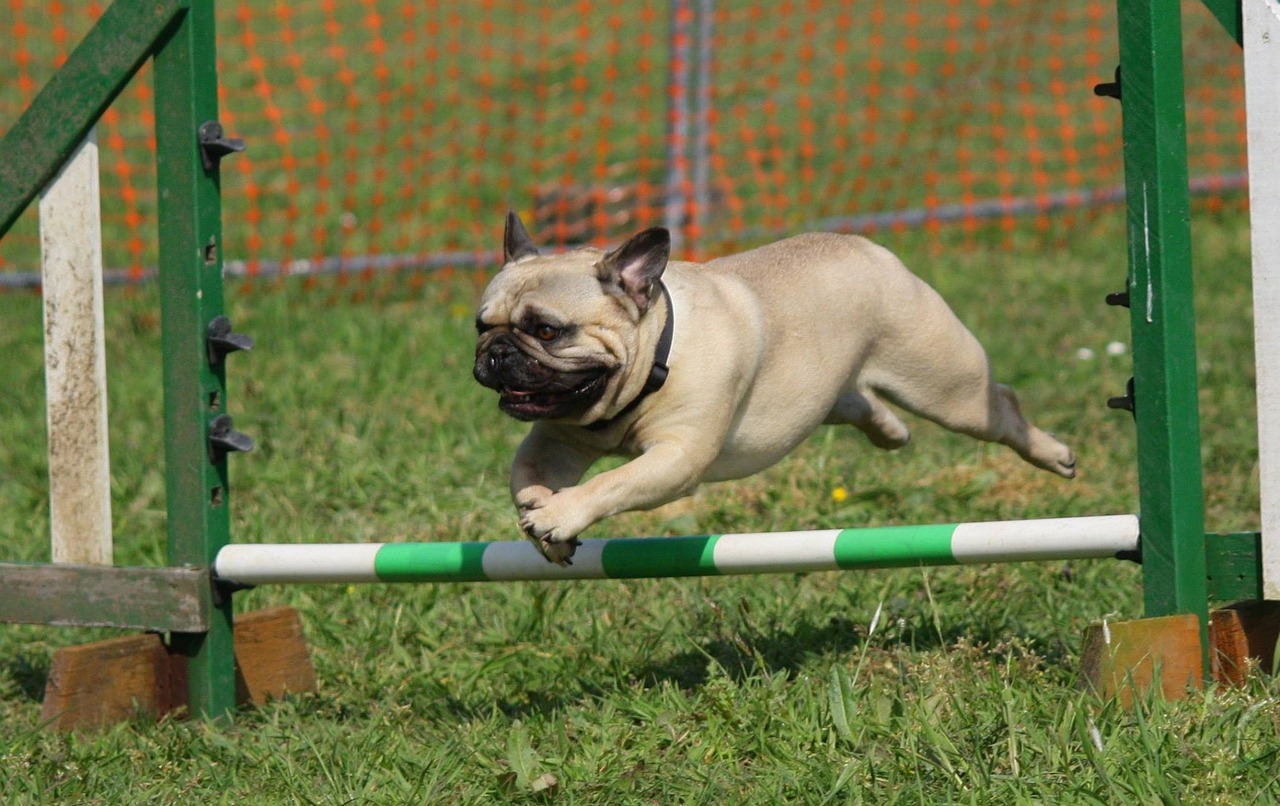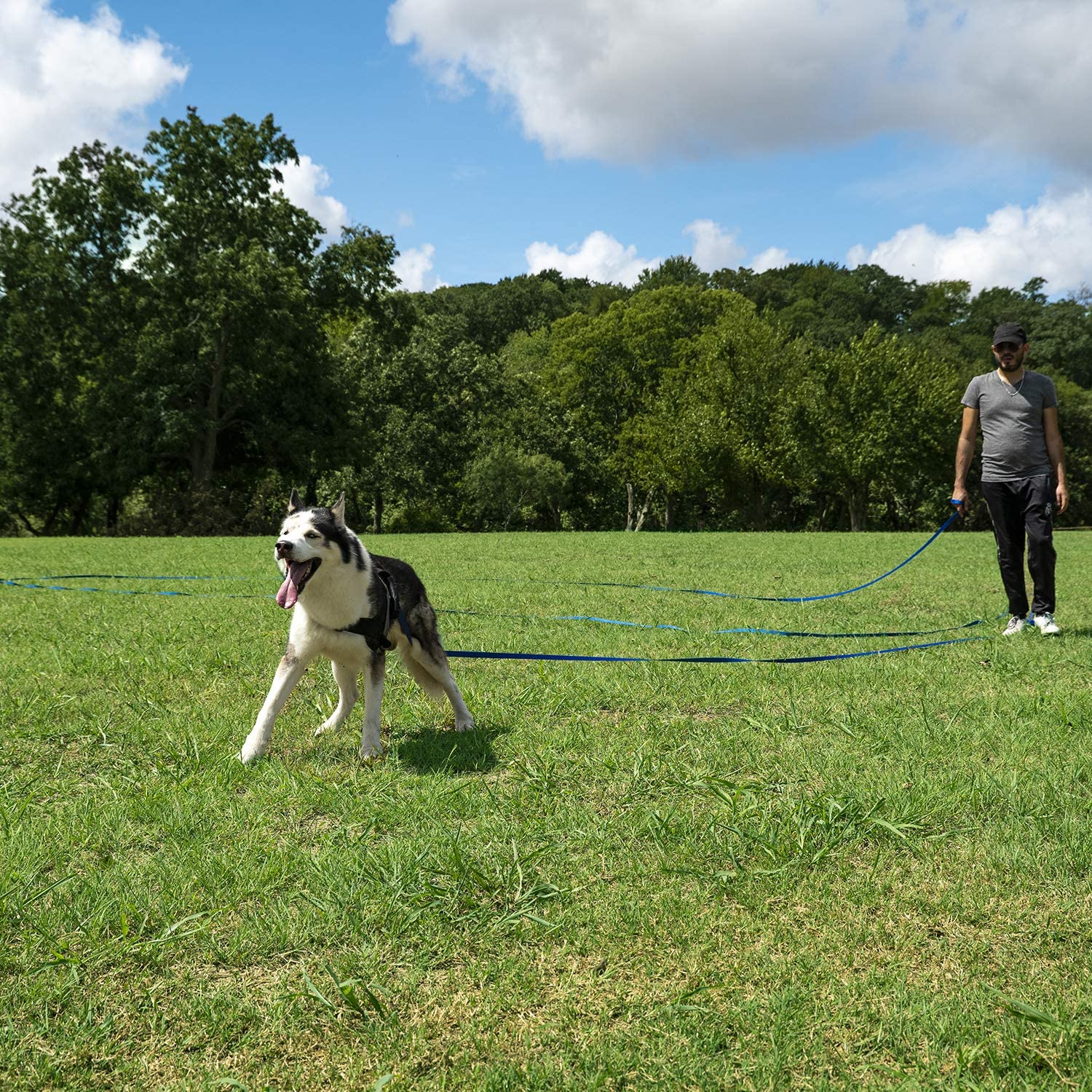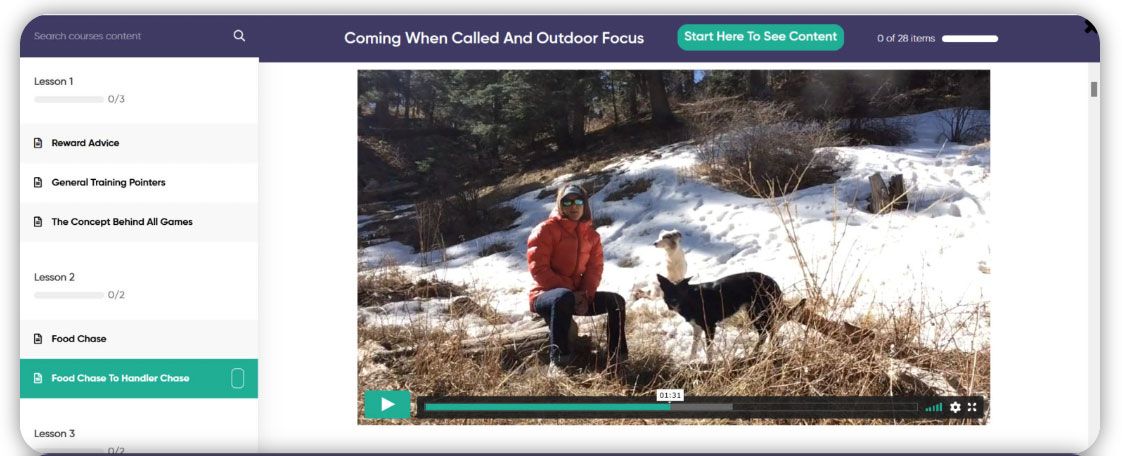
Pugs are adorable and lovable companions, but their stubborn and independent nature can sometimes make it difficult to train them. One of the most important commands to teach your pug is to come when called, as it can keep them safe in potentially dangerous situations. However, pugs can be easily distracted and may choose to ignore your commands.
In this article, we’ll discuss effective techniques to train your pug to come when called, including positive reinforcement, consistency, and patience. With a little effort and dedication, you can teach your pug this essential command and enjoy a happier and safer life together.
Note: For a complete training, we highly recommend this SpiritDog Online Training Course “Coming When Called”.
1. Start with a Strong Foundation
Before you begin training your pug to come when called, it’s crucial to establish a strong bond with your pet. Spend time playing with your dog, engaging in activities they enjoy, and providing positive reinforcement through praise and treats. Building trust and a strong connection with your pug will make them more likely to respond positively to your commands.
2. Choose a Distinct Command Word
Select a specific word or phrase for the recall command, such as “come” or “here.” Ensure that the command is distinct from other commands you use and that all family members use the same word consistently. Consistency is critical to avoid confusing your pug and ensuring that they understand what you expect from them.
3. Begin Training Your Pug in a Controlled Environment
Start training your pug to come when called in a controlled, distraction-free environment like your home or a fenced yard. In the early stages of training, it’s essential to minimize distractions to help your dog focus on learning the new command. As your dog becomes more reliable in responding to the recall command, gradually introduce distractions and practice in various environments.
4. Use Positive Reinforcement with Your Pug
When training your pug to come when called, always use positive reinforcement techniques. Reward your pup with praise, treats, or playtime when they respond to your recall command. This will help create a positive association with the command and motivate your dog to respond consistently. Remember to be patient and consistent in your training, as it may take time for your dog to master the recall command.
If you’re using treats, these are currently the most popular training treats on Amazon.
5. Gradually Increase Distance and Distractions
As your pug becomes more reliable in responding to the recall command in a controlled environment, begin to increase the distance between you and your dog during training sessions. Practice calling your dog from various distances and gradually introduce distractions, such as other dogs, people, or toys. This will help your dog learn to respond to the command even in challenging situations.
Related: Looking for the fastest way to train your pug to come when called? Try this video course.
6. Make Yourself Interesting and Rewarding to Your Pug
To encourage your pug to come when called, make yourself more appealing and rewarding to your dog. Use an enthusiastic, high-pitched voice when calling your dog, and reward them with a treat or praise when they respond. You can also try running away from your dog when calling them, as this can entice your dog to chase after you and respond to the recall command.
7. Never Punish Your Pug for Coming When Called
It’s essential to avoid punishing your pug if they do not immediately respond to the recall command or if they come to you slowly. Punishing your dog can create a negative association with the command and make them less likely to respond in the future. Instead, be patient and continue to practice and reinforce the command using positive reinforcement techniques.
8. Practice the Recall Command Regularly with Your Pug
Consistent practice is crucial for training your pug to come when called. Incorporate recall training into your dog’s daily routine, and practice the command in various environments and situations. This will help reinforce the behavior and make it more reliable over time.
9. Use a Long Training Leash on Your Pug
When transitioning from a controlled environment to a more open space, consider using a long training leash to maintain control over your pug while they learn to respond to the recall command. This will help you avoid losing control of your dog and provide a safety measure as you gradually increase the distance and distractions during training sessions.
This is the most popular long training leash on Amazon.
10. Be Patient and Persistent with Your Pug
Training your pug to come when called takes time, patience, and persistence. Some dogs may learn the command quickly, while others may require more time and consistent practice. Be patient with your dog and maintain a positive attitude during training sessions. Remember that every dog is unique, and the key to success is consistent practice and positive reinforcement.
11. Use a Professional Online Pug Training Course
While this article provides many helpful tips for training your pug, you can increase your chances of success by enlisting the help of a professional online dog trainer. We love the SpiritDog online courses, since its includes unlimited questions with a real dog trainer.
You can check out their Teach Your Pug to Come Online Course Here
Teaching your pug to come when called is a crucial skill that can benefit both you and your furry friend. With consistent training and positive reinforcement, you can overcome your pug’s stubbornness and independence, and ensure that they come to you when you call them. Remember to keep training sessions short and fun, and to be patient and persistent in your efforts. Your pug may take some time to learn, but with dedication and practice, they will eventually come to associate the command with positive experiences and respond to it reliably. By mastering this skill, you can keep your pug safe and enjoy a stronger bond with your pet.
More Frequently Asked Questions for Training Your Pug
1. How can I stop my pug from barking excessively?
Pugs are known for their tendency to bark excessively, which can be a problem for their owners and their neighbors. Excessive barking can be caused by a variety of factors, such as boredom, anxiety, or territorial behavior. To stop your pug from barking excessively, it’s important to identify the underlying cause and address it accordingly.
One effective way to prevent excessive barking is to provide your pug with plenty of physical and mental stimulation. Regular exercise, interactive toys, and puzzle games can keep your pug entertained and prevent boredom. Additionally, providing your pug with a designated space to relax and feel safe can reduce anxiety-related barking.
Training is also essential in preventing excessive barking. Teaching your pug to respond to basic commands such as “quiet” or “enough” can help you control their barking behavior. Consistent and positive reinforcement training can also help your pug develop good behavior habits and reduce their overall barking.
If your pug’s excessive barking persists, consult with a professional dog trainer or behaviorist for additional guidance and support.
2. How can I teach my pug to stop jumping on people?
Pugs are affectionate and energetic dogs that love to greet people by jumping up to get attention. However, jumping on people can be annoying and even dangerous, especially for children or elderly individuals. To teach your pug to stop jumping on people, you should begin by setting clear rules and boundaries.
Start by teaching your pug basic obedience commands such as “sit” and “stay.” This will help your pug understand that they need to follow your commands and wait for your permission before jumping up. Whenever your pug jumps up, gently but firmly tell them “off” and redirect their attention to an appropriate behavior such as sitting or lying down.
Consistency is key when training your pug to stop jumping up. Make sure that everyone in your household and any visitors understand and follow the same rules. It’s also important to reward your pug for good behavior and reinforce positive interactions with people.
If your pug’s jumping behavior persists, consider consulting with a professional dog trainer or behaviorist for additional guidance and support.
3. How can I prevent my pug from chewing on everything?
Pugs, like most dogs, love to chew on things. However, their chewing behavior can become destructive if left unchecked. To prevent your pug from chewing on everything, it’s important to provide them with appropriate chew toys and discourage inappropriate chewing behavior.
Start by providing your pug with a variety of chew toys that are safe and durable. Rotate the toys regularly to keep your pug interested and prevent boredom. If your pug starts chewing on something they shouldn’t, redirect their attention to an appropriate chew toy.
It’s also important to discourage inappropriate chewing behavior by supervising your pug and limiting their access to items that they shouldn’t chew on. If you catch your pug chewing on something they shouldn’t, calmly but firmly tell them “no” and redirect their attention to an appropriate chew toy.
Consistency is key when training your pug to chew appropriately. Reward your pug for good behavior and praise them when they chew on appropriate toys. If your pug’s chewing behavior persists, consider consulting with a professional dog trainer or behaviorist for additional guidance and support.
In conclusion, training your pug requires patience, consistency, and positive reinforcement. By identifying the underlying causes of common behavior issues and addressing them accordingly, you can help your pug develop good behavior habits and become a well-behaved companion.
4. What’s the best online course for teaching a pug to come when called?
At iHeartDogs, we recommend the SpiritDog online course “Coming When Called.” The course includes unlimited questions with a real dog trainer.
iHeartDogs is reader supported. Our articles contain affiliate links where we are paid a small commission for linking to a product at no additional cost to the reader.



 Toledo, United States.
Toledo, United States.